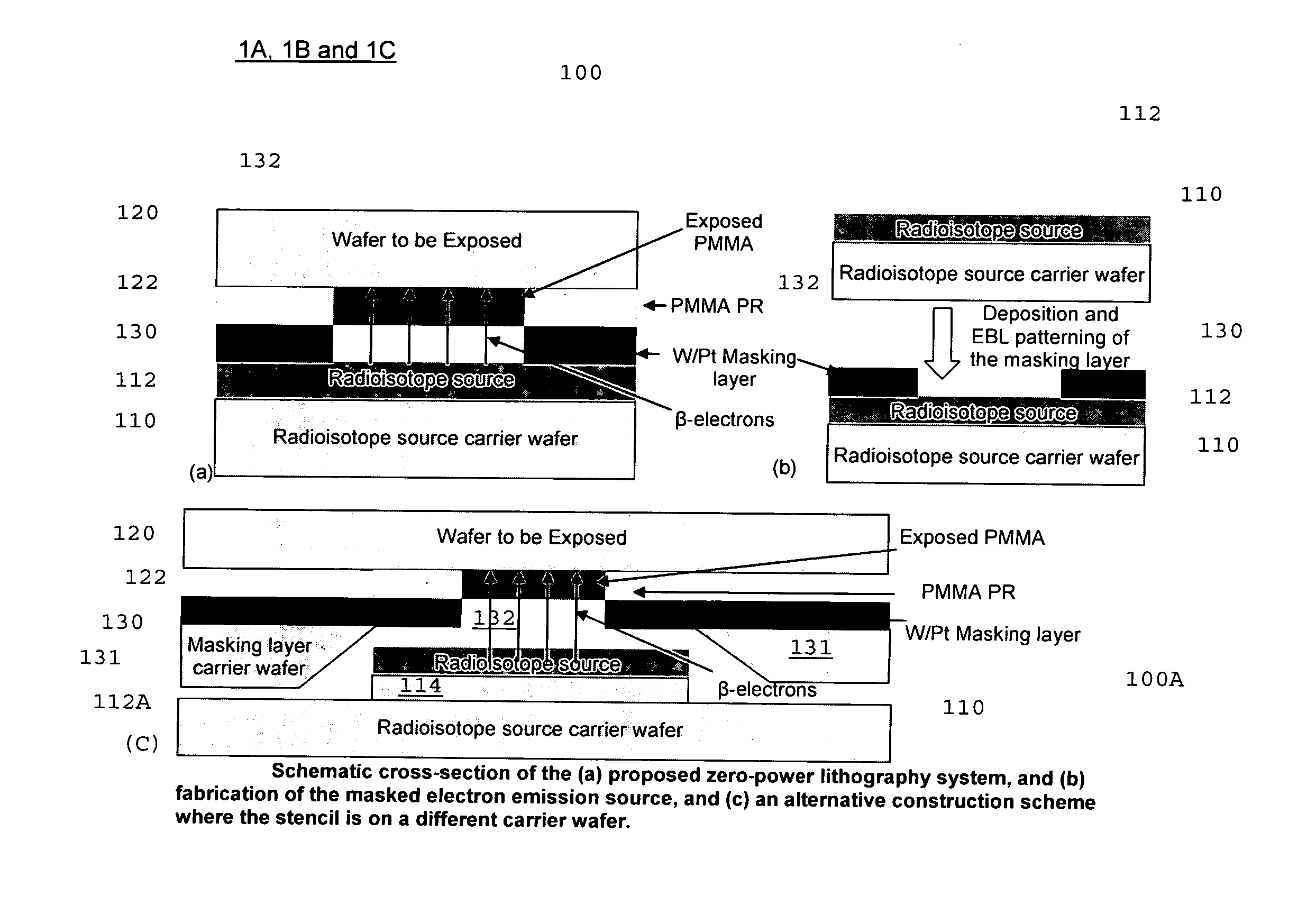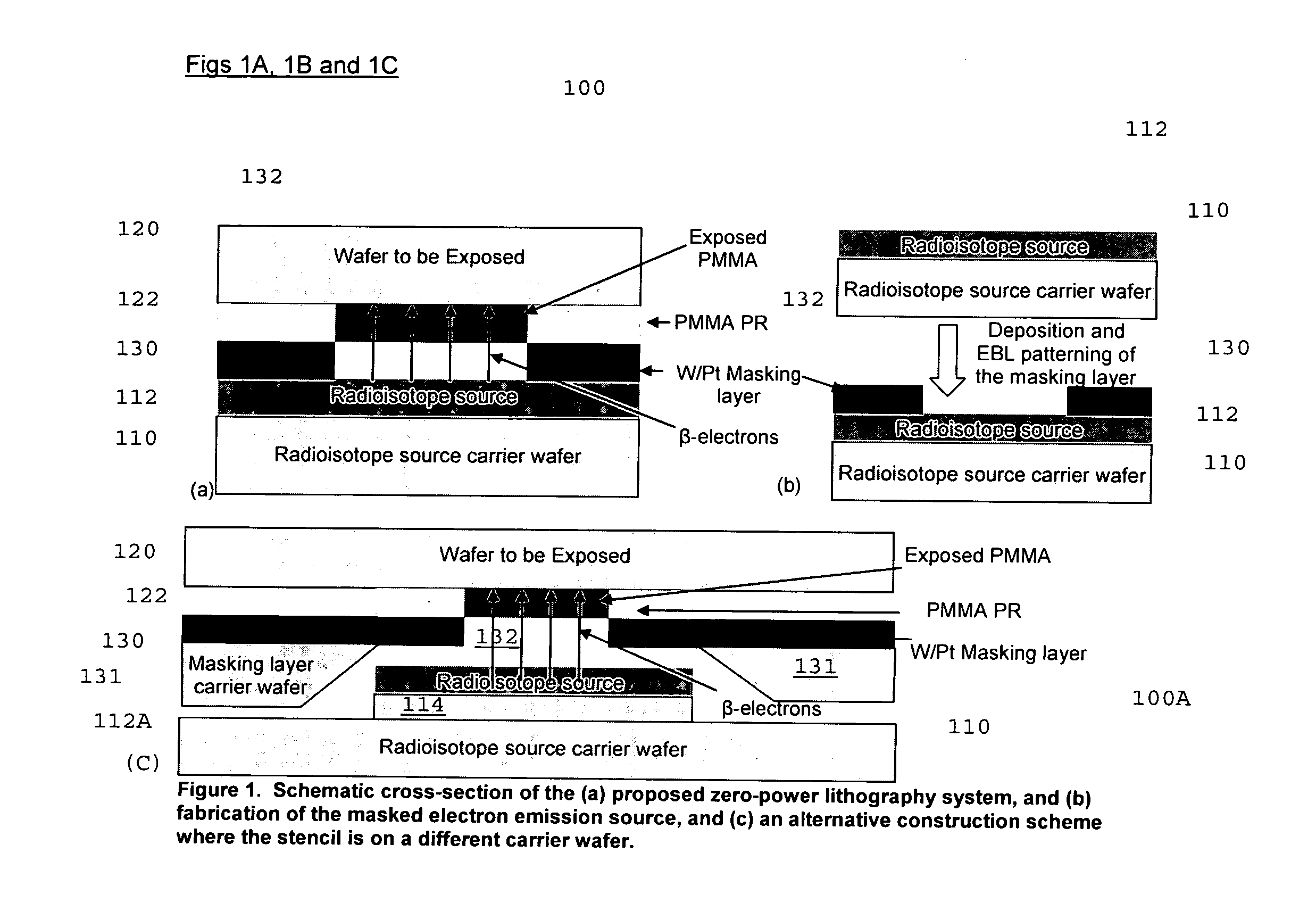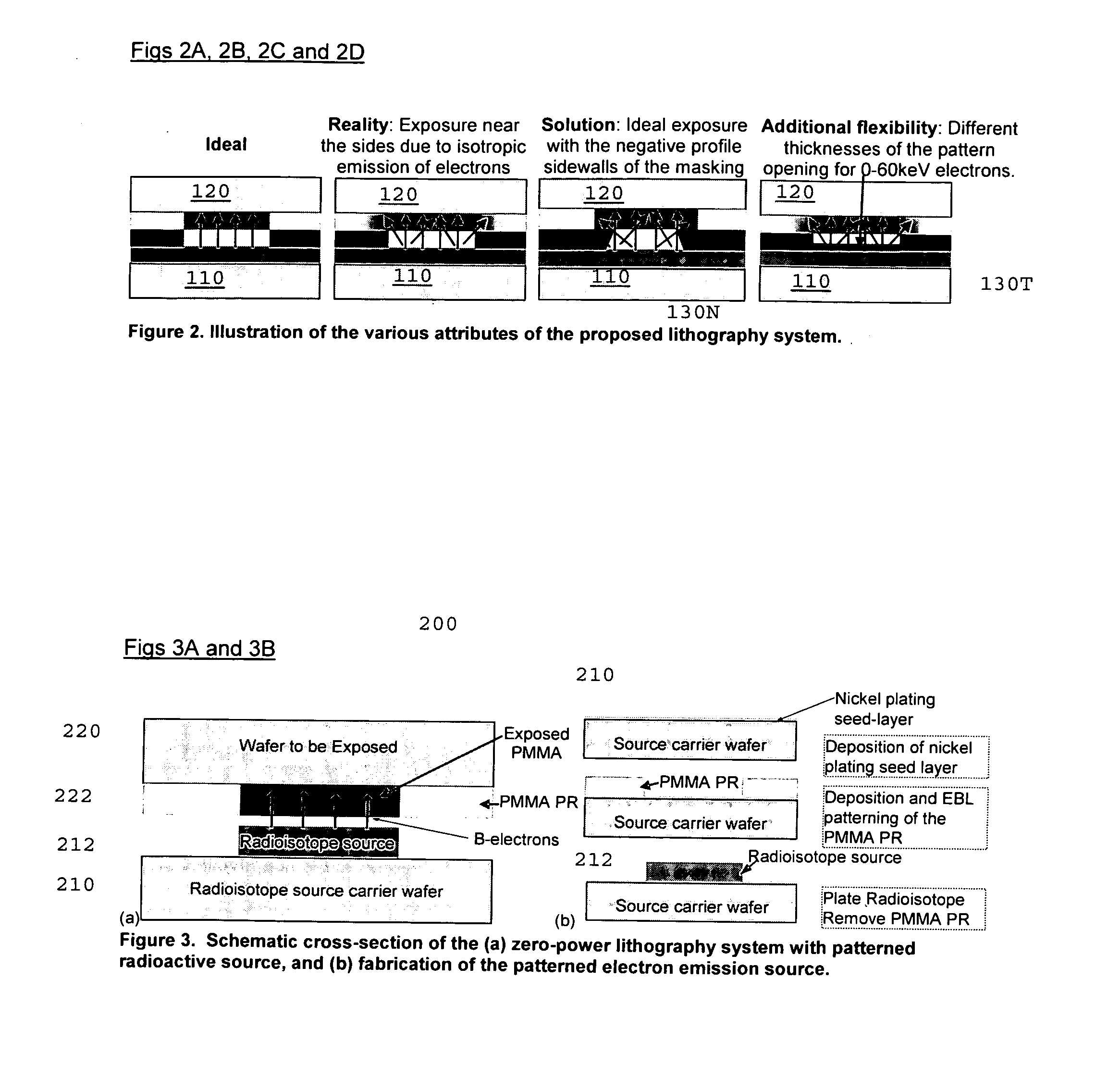Self-powered lithography method and apparatus using radioactive thin films
a self-powered lithography and thin film technology, applied in photomechanical equipment, instruments, originals for photomechanical treatment, etc., can solve the problems of high production cost and maintenance costs of prior art lithography systems, and achieve the effect of fast and low-cost nano-lithography and low-cost nano-scale systems
- Summary
- Abstract
- Description
- Claims
- Application Information
AI Technical Summary
Benefits of technology
Problems solved by technology
Method used
Image
Examples
Embodiment Construction
[0042]Turning now to FIGS. 1A-10E, in accordance with the present invention, a lithographic system 100 includes three primary components, namely, an emitter thin film or substrate 110 including the radioactive material 112 (e.g., a radioisotope), a target substrate 120 which carries the energy-modifiable layer 122 (e.g., photo-resist), and a stencil or mask 130 sandwiched or positioned between emitter substrate 110 and target substrate 120. Pattern-defining stencil 130 includes a non-transmissive material (e.g., a heavy metal masking layer made from such as a W / Pt) capable of blocking particles emitted through radioactive decay from radioisotope 112 of the emitter substrate 110.
[0043]Stencil 130 defines a pattern having openings or vias arranged to permit selective transmission of the particles emitted through radioactive decay from the radioisotope of the emitter substrate 110, and stencil 130 is placed up against (or very close to) the target substrate, as shown in FIG. 1A, a sche...
PUM
| Property | Measurement | Unit |
|---|---|---|
| Time | aaaaa | aaaaa |
| Length | aaaaa | aaaaa |
| Length | aaaaa | aaaaa |
Abstract
Description
Claims
Application Information
 Login to View More
Login to View More - R&D
- Intellectual Property
- Life Sciences
- Materials
- Tech Scout
- Unparalleled Data Quality
- Higher Quality Content
- 60% Fewer Hallucinations
Browse by: Latest US Patents, China's latest patents, Technical Efficacy Thesaurus, Application Domain, Technology Topic, Popular Technical Reports.
© 2025 PatSnap. All rights reserved.Legal|Privacy policy|Modern Slavery Act Transparency Statement|Sitemap|About US| Contact US: help@patsnap.com



